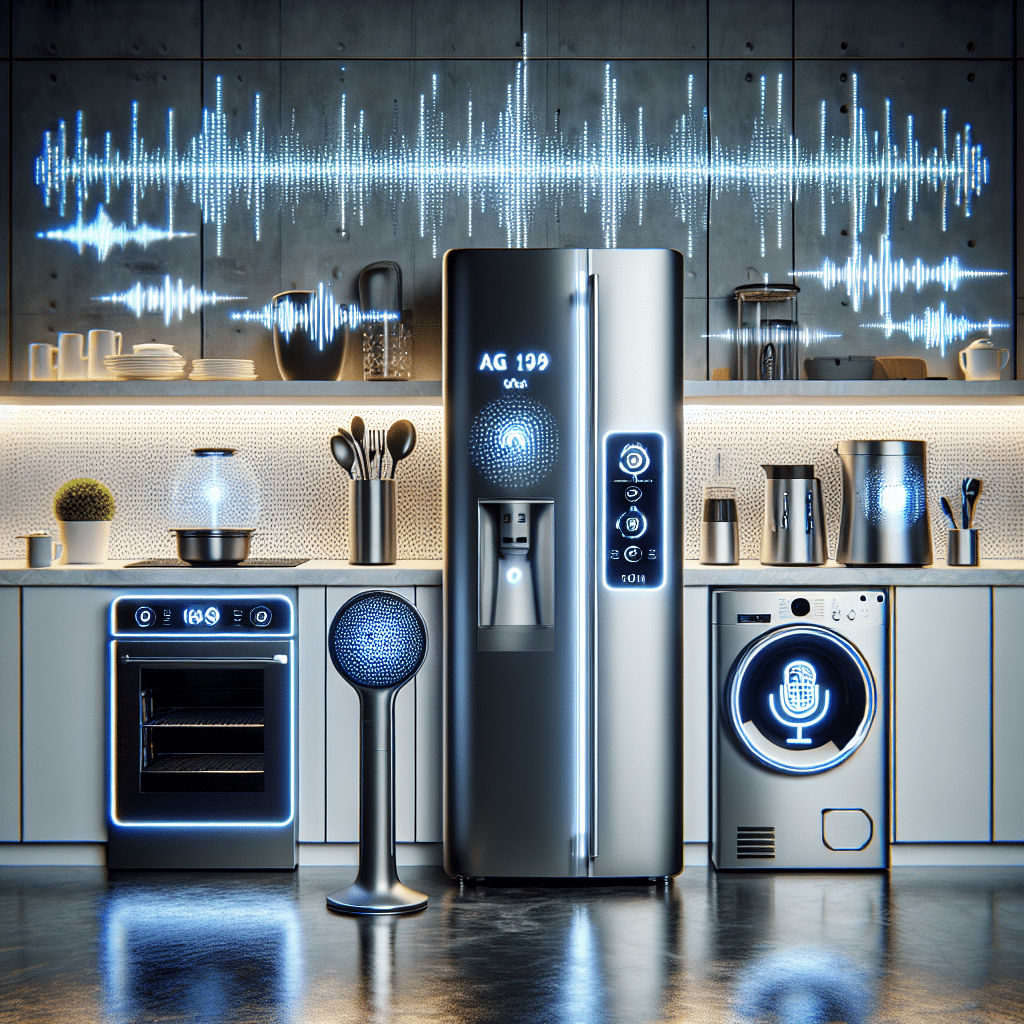Understanding Voice-Controlled Smart Appliances for a Futuristic Kitchen
The Rise of Smart Home Technology
Voice-controlled smart appliances have revolutionized modern kitchens, embodying the seamless integration of technology into daily life. These devices utilize Artificial Intelligence (AI) and the Internet of Things (IoT) to create an interconnected environment, enabling users to control appliances through simple verbal commands. The future of cooking is not just about convenience but also about efficiency, personalization, and enhanced culinary experiences.
Advantages of Voice-Controlled Smart Appliances
-
Hands-Free Convenience: One of the primary benefits of voice-controlled appliances is their hands-free operation. While cooking, a user can ask their smart speaker to adjust the oven temperature, set timers, or play music. This feature is essential for multitasking, allowing cooks to focus on their dishes without interruption.
-
Personalized Cooking Experience: Smart appliances can learn individual preferences over time. For instance, if a user frequently requests to bake at a particular temperature or timing, the appliance can store these preferences, thus personalizing the cooking experience.
-
Recipe Assistance: Many voice-controlled systems can access extensive recipe databases. Users can ask for ingredient lists, cooking steps, or substitution suggestions, transforming the kitchen into a personal cooking assistant that enhances culinary creativity.
-
Smart Planning and Management: Managing kitchen tasks becomes easier with voice-activated technology. Users can create shopping lists, check for inventory, and send reminders for meal prep and cooking deadlines, optimizing kitchen management.
Key Features of Modern Voice-Controlled Appliances
-
Voice Recognition: Advanced voice recognition technology allows appliances to understand commands accurately, even in noisy environments. This feature is crucial for ensuring commands are executed efficiently.
-
Integration with Smart Home Devices: Voice-controlled appliances integrate seamlessly with other smart home devices. For example, a smart refrigerator can communicate with a smart oven to adjust cooking times based on available ingredients.
-
Network Connectivity: Most smart appliances connect via Wi-Fi or Bluetooth, enabling real-time updates and remote control. Users can monitor and control their appliances via mobile applications when away from home.
-
Energy Efficiency: Many smart appliances are designed with energy efficiency in mind. They can monitor usage patterns and optimize energy consumption, reducing electricity bills while maintaining performance.
-
Security Features: Smart appliances often include security measures to protect against unauthorized access. User authentication and data encryption ensure a safe user experience even in an increasingly connected kitchen environment.
Popular Voice-Controlled Smart Appliances
-
Smart Ovens: Smart ovens can be voice-activated to adjust cooking settings, preheat, and monitor cooking times. Models from brands like June and Samsung offer features like recipe integration and camera functionality to monitor cooking progress.
-
Smart Refrigerators: These appliances can suggest recipes based on available ingredients, track expiration dates, and manage grocery lists. Units from LG and Whirlpool are equipped with built-in screens for even smoother interaction.
-
Smart Dishwashers: Dishwashers equipped with voice control can be started or scheduled through voice commands. These appliances often feature sensor technology to optimize water and energy use based on load size.
-
Smart Coffee Makers: Imagine waking up to freshly brewed coffee without lifting a finger. Brands like Hamilton Beach and Smarter have developed coffee makers that respond to voice commands for brewing times, strength, and more.
-
Smart Slow Cookers: Devices like the Instant Pot Smart WiFi allow users to control cooking functions via voice, significantly making meal preparations easier for busy lifestyles.
Voice Assistants and Compatibility
In a futuristic kitchen, compatibility between various appliances and voice assistants is crucial. Major voice assistants like Amazon Alexa, Google Assistant, and Apple’s Siri play a pivotal role in coordinating commands across diverse devices. Users can pair their voice-controlled appliances with these assistants for an interconnected experience.
Integration Considerations: When purchasing smart appliances, users should ensure compatibility with their chosen voice assistant. Often, product packaging includes compatibility logos, making it easier to identify suitable devices.
Future Trends in Voice-Controlled Appliances
-
More Advanced AI: The future will see further developments in AI, allowing appliances to understand context better. This means devices could infer user needs based on previous interactions and make cooking suggestions accordingly.
-
Enhanced User Experience: As user interface technologies advance, appliances will likely see more intuitive designs with touchscreens and haptic feedback, merging voice control with visual elements.
-
Sustainability Features: The incorporation of sustainable practices in kitchen devices will become more prevalent. Smart appliances will be programmed to minimize waste, such as suggesting recipes to use up leftover ingredients.
-
Inter-Device Communication: Appliances will increasingly “talk” to one another to streamline kitchen processes. For example, a smart oven could adjust cooking times based on the status of food inside the smart fridge.
-
Health Monitoring: Future appliances may also include health monitoring features to guide users on nutritional requirements, allergies, and dietary restrictions, ensuring a healthier cooking approach.
Conclusion: Embracing the Smart Kitchen Revolution
As technology continues to evolve, voice-controlled smart appliances are set to redefine the culinary landscape. Their role in providing convenience, efficiency, and enhanced personalization makes them an integral part of modern cooking. Adopting these innovations will not only elevate the daily cooking experience but also position users at the forefront of culinary technology.
Embracing voice-controlled smart appliances in a futuristic kitchen ensures that we are not just cooking meals but creating delightful experiences with ease and intelligence.
